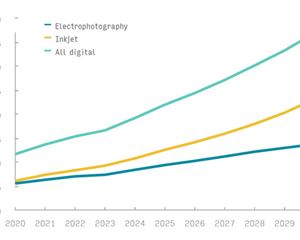Sani: New luxury isn't about the visual appeal alone
Anushka Sani of Thought Over Design sheds light on consumer's expectations from brands and the challenges involved in switching to sustainable packaging
28 Nov 2020 | By WhatPackaging? Team
Consumers seek transparency
The Covid-19 pandemic has only amplified the consumer expectations for transparency and clarity, says Anushka Sani, founder and creative director Thought Over Design. Why do consumers need to read between the lines or see through brand imagery to find out what they're buying? Sani explains that consumers are smartening up and aren't going to be fooled by the claim-game and wordplay of brands. And even the brands are becoming aware of this conscious consumer behaviour as it is not just about looking great on the retail shelf, it's about having a simple clear message across channels and mediums, which includes packaging.
“In the case of brands, it would be helpful if they can simply communicate or highlight if any measures have been taken to package their products in a safer environment. Also, if there are any unboxing tips or even tips on how to dispose of the packaging, consumers respect and appreciate it,” she says.
The challenges in sustainable packaging
To create a sustainable packaging ecosystem a collaboration between multiple types of designers along with brand owners is the way ahead, says Sani. “We need industrial, material and graphic designers to come together to create new benchmarks and systems for sustainable design to work. Packaging design as a practice has evolved based on the materials available to us as designers and brand custodians. But if these materials and possibilities evolve, so will the way we design.”
“Working with brands that don't have huge minimum order quantities, I have realised that it is an uphill climb when they focus on aspects such as shelf life and storage concerns (which are very valid retail and consumer concerns).
The start-up brands are open to exploring sustainable alternatives, but these become very tricky when it comes to minimum order quantities and cost per stock keeping unit.” In this quest towards sustainability, the top brands should lead from the front by increasing the usage of eco-friendly materials in product packaging; and make these project research data available to all. This can enable smaller players to emulate their approach and create a roadmap for sustainable development. “The industry must acknowledge that gone are the days where the packaging has to look a certain way to be considered luxurious.
The new luxury isn't about the visual appeal alone – and that's key.” On the other side, Sani also urges printers, paper manufacturers, studio owners and agencies to help brands with new and viable eco-friendly solutions. “We should put our experiences together and find scalable, affordable solutions for brands.”
“Packaging is designed for a certain context. The context for customer consideration is shifting and so will its design.”
The context of packaging design
Businesses were at a standstill amid the lockdown period and in most cases, the work-from-home system demanded a new outlook for design approvals. “Amid the lockdown, as we are unable to physically visit facilities in many cases or check print outputs, we took a day or two more couriering it with the Pantone books so that we can align on final decisions. However, the silver lining here is that the brand owners are a lot more understanding about the circumstances and tend to be okay with colours being "almost" there. There are realities of going to market and timelines, so we do the best we can to ensure everyone is safe in the process.” On the creation of digital packages such as the latest Lay’s Artwork for Heartwork campaign which comprised of virtual package launches, Sani says, “Packaging is designed for a certain context.
If the context for customer consideration is shifting, so will the design. However, this shouldn' t be confused with trends. And I think designing for social media as a core focus becomes more trend-based.”
The mindful brand strategist
Anushka Sani is the founder of a creative agency in Mumbai called Thought Over Design, who believes that brands are the tools people use to reinforce their own identity and find their place in the world; and over time, brands become a reflection of culture and collective mindset. Sani is a brand strategist who uses design as a medium to tell stories and begin meaningful conversations. Her company was incepted with the simple idea that good design is the outcome of thinking mindfully and intentionally about things before doing them.












 See All
See All